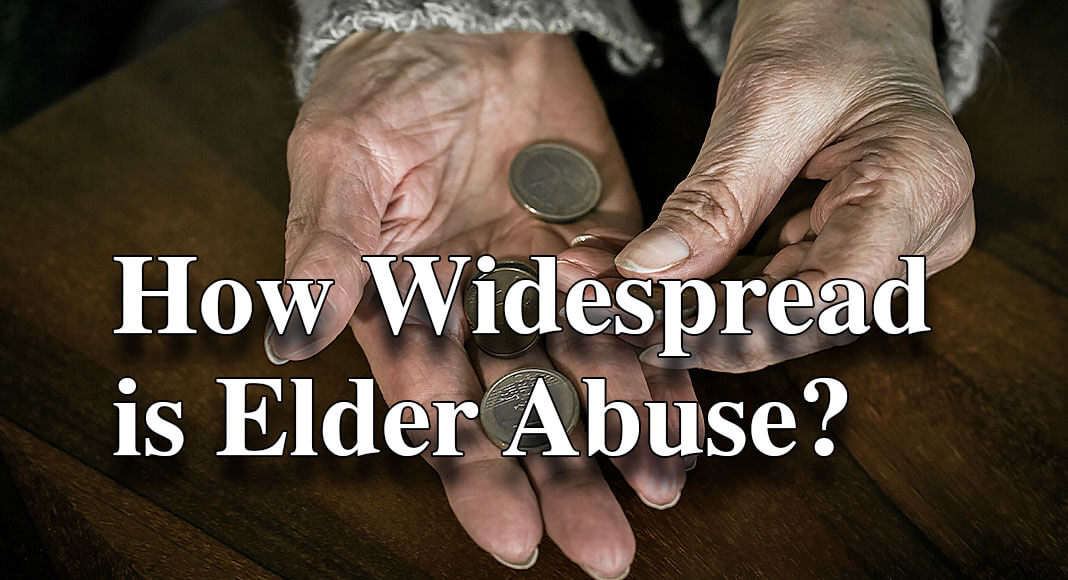
Texas Border Business
National Center on Elder Abuse
To provide context, incidence and prevalence rates of mistreatment are informed by the core definitions, inclusion criteria, theoretical basis, and methodology utilized by respective researchers to guide the collection of data.[26] As a result, prevalence estimates of abuse, as reflected in recent studies, are variable.
• Abuse in the Community: Studies have found that at least one in 10 community-dwelling older adults experienced some form of abuse in the prior year.[27] [28] Global estimates from a recent meta-analysis reflect that one in six elders, or 15.7%, in the community experienced past year abuse.[29]
Prevalence rates by type of abuse differ across studies. One study, relying on self-reports of abuse, assigned the following percentages by type of abuse: psychological (11.6%), physical (2.6%), financial (6.8%), neglect (4.2%), and sexual (0.9%) abuse.[30] Another recent study found the following: emotional (4.6%), physical (1.6%), financial (family:5.2%), financial (stranger:6.5%), neglect (5.1%), and sexual (.6%).[31]
A recent meta-analysis assessing the global prevalence rates of the abuse of older women found that one in six experienced abuse in the prior year. By type, the pooled prevalence rates reflected the following percentages: psychological abuse (11.8%), physical abuse (1.9%), financial abuse (3.8%), neglect (4.1%), and sexual abuse (2.2%).[32]
• Abuse in Institutions: Few studies have investigated the prevalence of mistreatment within institutions. Those that have been conducted have provided wide-ranging, sometimes disparate estimates. A recent systematic review that collected self-reports of abuse by residents found high levels of institutional abuse. By type, prevalence estimates reported: psychological abuse (33.4%), physical (14.1%), financial (13.8%), neglect (11.6%), and sexual abuse (1.9%).[33]
Note: Studies have recognized that projections of abuse likely underestimate the actual population prevalence.[34] For every incident of abuse reported to authorities, nearly 24 additional cases remain undetected.[35] Underreports may be caused by a number of factors including an older person’s fear of retaliation by the offender, reluctance to disclose the incident because of shame or embarrassment, concern they will be institutionalized, dependency on the offender, and an inability to report because of physical limitations or cognitive impairments.[36]
• NCEA Technical Assistance Data
In a study examining the types of elder abuse reported to the National Center on Elder Abuse’s resource line, researchers found that financial abuse was the most commonly reported form of mistreatment. Allegations of physical abuse were most likely to co-occur with another type of abuse. Family members were the most often identified offenders.[37]
Information Source: https://ncea.acl.gov
References:
[26] Neuhart, R., & Carney, A. (2020). Psychological Abuse. Elder Abuse, 163-182.
[27] Acierno, R., Hernandez, M. A., Amstadter, A. B., Resnick, H. S., Steve, K., Muzzy, W., & Kilpatrick, D. G. (2010). Prevalence and correlates of emotional, physical, sexual, and financial abuse and potential neglect in the United States: The National Elder Mistreatment Study. American journal of public health, 100(2), 292-297.
[28] Rosay, A. B., & Mulford, C. F. (2017). Prevalence estimates and correlates of elder abuse in the United States: The national intimate partner and sexual violence survey. Journal of elder abuse & neglect, 29(1), 1-14.
[29] Yon, Y., Mikton, C. R., Gassoumis, Z. D., & Wilber, K. H. (2017). Elder abuse prevalence in community settings: a systematic review and meta-analysis. The Lancet Global Health, 5(2), e147-e156.
[30] Yon, Y., Mikton, C. R., Gassoumis, Z. D., & Wilber, K. H. (2017). Elder abuse prevalence in community settings: a systematic review and meta-analysis. The Lancet Global Health, 5(2), e147-e156.
[31] Acierno, R., Hernandez-Tejada, M., Muzzy, W., & Steve, K. (2009). National Elder Mistreatment Study (NCJ # 226456). Washington, DC: National Institute of Justice, Office of Justice Programs, U.S. Department of Justice.
[32] Yon, Y., Mikton, C., Gassoumis, Z. D., & Wilber, K. H. (2019). The prevalence of self-reported elder abuse among older women in community settings: a systematic review and meta-analysis. Trauma, Violence, & Abuse, 20(2), 245-259.
[33] Yongjie Yon, Maria Ramiro-Gonzalez, Christopher R Mikton, Manfred Huber, Dinesh Sethi, The prevalence of elder abuse in institutional settings: a systematic review and meta-analysis, European Journal of Public Health, Volume 29, Issue 1, February 2019, Pages 58–67,
[34] Pillemer, K., Burnes, D., Riffin, C., & Lachs, M. S. (2016). Elder abuse: global situation, risk factors, and prevention strategies. The Gerontologist, 56(Suppl_2), S194-S205.
[35] Storey, J. E. (2020). Risk factors for elder abuse and neglect: A review of the literature. Aggression and Violent Behavior, 50, 101339.
[36] Baker, P. R., Francis, D. P., Hairi, N. N., Othman, S., & Choo, W. Y. (2016). Interventions for preventing abuse in the elderly. Cochrane Database of Systematic Reviews, (8).
[37] Weissberger, G. H., Goodman, M. C., Mosqueda, L., Schoen, J., Nguyen, A. L., Wilber, K. H., … & Han, S. D. (2020). Elder abuse characteristics based on calls to the National Center on elder abuse resource line. Journal of Applied Gerontology, 39(10), 1078-1087.














